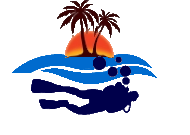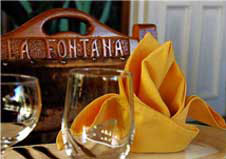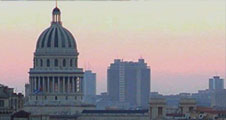Testimonies of Cuban Culture since October 20th of 1868
By: Miralys Sánchez Pupo | Source: CUBARTE | 20 de October 2009Cuban culture was born from the first cry of war of her sons aiming at finally conquering the independence of a motherland, who saw her first lights when the music composed by Perucho Figueredo since 1867 as the call to combat for conquering the liberty from the colonial system existing in the Island, aiming toward the consolidation of its national identity.
But that war anthem was missing from a descriptive lyrics that will show its main purposes. In the middle of the euphoria generated by the conquering of Bayamo by the liberation army, the patriot, feeling a great emotion wrote, while still riding his horse , the lyrics that completed his cultural contribution, to demonstrate to the world that the early days of a new nationality were in the process of consolidating.
Many elements were getting together all along several centuries during which Cuba appeared in front of the world, as a space anchored in the Sea of the Antilles, full of natural beauties that from its very early days was defended by its inhabitants although in a clear disadvantage facing the conquerors weapons and that all along the time span demonstrated with great clarity the love for liberating its land of all unjust enemy aggressiveness.
The harmonious word was the first witness of that far standing intention as it was demonstrated since the dawn, where Espejo de Paciencia came to light, a book supposedly written in 1608 by Silvestre de Balboa, whose top figures of poetry then joined with in the works of Jose Marti and Julian del Casal during the 19th Century.
The war was the melting pot where the Cuban culture showed the full values of an aesthetic set of conceptual values in moments during which the rhyme of poetry was present in the combatants and in their cavalry. It was not by chance that Jose Marti, in his work titled The Poets of the War assured that ... “ There are verses that will make tears and others that call to ride a horse “ (1)
It is not by chance that the 20th of October was selected to be the Day of Cuban Culture, in remembrance of the taking of Bayamo, that was the first victory of the patriots that raised up in arms following the call by Carlos Manuel de Cespedes ten days earlier. The moment of joy was impressive when all of them passed along from hand to hand the lyrics that filled them of deeply rooted patriotism and that due to its merits still accompanies us having transformed in the Cuban, National Anthem, that represents us all over the world.
The Master – Jose Marti – didn´t forget the shine of the prose with the trip of the adjectives peculiar to the Cubans, and the anecdotes of their combats that appeared in the printed letters of the printing shops that transformed into combatants for the conquering of the new motherland.
Among its most glorious episodes were those printing shop types that served to describe the Cuban anxieties for reaching the independence with well defined criteria about the future.
That was why the reading of the birth of those ancient pages found the light described from the generous poetry and the history that was being written from the weapons as part of the memoirs of the Cuban people.
The work of the future was written from the bush. It was made trough the culture that was also as uprising as the combatants that displayed it for the future in the interest of founding a nation of all the Cubans. They had the right to break the chains of a social background of a slave nature that did not allowed.
That was why there was the necessity to conquer them from the very bush, and with the weapons that were taking from the enemy in their own trenches.
The great poem of the Cuban nationality in development was demonstrated in the early dawn of the10th of October of 1868. The men until then ignorant of the mysteries of writing and reading contributed to write it with the grandiosity of human kind that preceded the word. That gesture should be imitated and form part of the founding thoughts whose solid nature was in the testimony of the truth with the ferocity of each battle whose memories Marti´s pen described from his optic to assure “... But the poetry of war should not be looked in what was written : the poetry that was written is a step below of the virtue that promotes it, and when writing is done with the spade in history, there is no time , no will, to write with the pen on paper ” (2)
But at the same time the Master, found in those episodes the Cuban soul that should be reached forever and reiterated his admiration and recognition for those that had sculpted it from the trenches of combat.Picking up from that dust the lessons was populating the spirituality of a new culture and in a very special way where the essence of its founders could be found.
Those verses of life in combat duty united in perfect harmony with the aspirations of Heredia for which he delivered for the future the lonely star of the real independence for which must be fought until it was conquered as founders of a new social value impossible to sidestep: the Cuban nation.
The universal nature of the largest of The Antilles.
The poetry that was ahead in time of the cuban essence was present in Jose Maria Heredia, when the motherland that he dreamed about did not existed. But his expressions found in the middle of a splendid nature his hymn for the search until a climax was reached conquering the ensign that has forever identified the future nation in development that even today holds up its lone star, the one that the poet selected to launch his people in the quest that is a recognized reality in a universal form.
The influences that arrived to Cuba along the course of time were enriched from the wide arms of a culture that assimilated the values of the universal but that at the same time filtered them from its concrete vision so as to in the same way enrich it too. That is the upturn that is shown by the modernistic approaches of Marti´s poetry much earlier than this expression matured as it may be found in the works for which Ruben Dario thanked him in his encounter as the father that inspired his poetry.
The triangle of Europe, The Antilles and Cuba and all the avenues of the historical conditions when the irruption of the French Revolution became known , had in the island a very important bridge of communications. From that scenery came out a prose that qualifies among the most notable of the world with the work titled El Siglo de las Luces written by Alejo Carpentier , who showed the threads between very and that at the same time converged in the walks of history.
But since much earlier the curtain of the real marvelous of our lands opened up from his memorable El Reino de este Mundo, that opened up a peculiar and until then ignored appreciation by other authors that closed their eyes in front of a truth that was impossible to evade, to demonstrate the important place of the ideas that the Cuban culture has always defended from its vanguard.
From that horizon the Cuban richness of the Cuban culture may be evaluated, ready as it was from its birth to promote a permanent creation in the musical scored of the great composers, who made possible that it be recognized. In those bars the Cervantes dances coexist with the beautiful sounds of the works of Ernesto Lecuona, who both offered to the cuban nature a school of music that is in now way removed from universality. Or we can look at the zarzuela Cecilia Valdes that is an X-ray taken to the Cuban society of the 19th century transported to the theater scene.
The keyboard, with all the far reaching range of its inspiration is full of the Cuban spirit by means of the works of maestros Chucho Valdes and Frank Fernandez. Their sounds provide from the most classic virtuosity to the at the same time deeply routed Cuban nature that has received praise in many international theaters.
Cuban voices have their expression in the figures of Rita Montaner, Bola de Nieves and Maria Teresa Vera. The young voice of Barbara Llanes and the large number of musical ensembles of a high artistic level are known beyond our borders because of their values. The highly professional nature of the Ars Long ensemble is an excellent example of an approach to ancient classical music, that benefits the musical appreciation of the Cubans.
Popular music has also a relevant place , from the troubadours like Maria Teresa Vera and Sindo Garay and the voices of the Matamoros Trio.
The large number of their followers in the latest centuries have their best examples in Benny More and orchestras like the Los Van Van of Formell.
Outstanding examples of Cuban culture are foun in the Cuban National Ballet, born from the art and far reaching outlook of Alicia Alonso. Or the Lizt Alfonso Ballet , without forgetting our theaters, that like the Amadeo Roldan host the National Symphony Orchestra or the ones that serve the scenic arts groups with their wide reaching spectrum of drama, comedy , the zarzuela or the opera.
Cuban painting , from the very early days of the 19th century, the universality of the following century present in Wilfredo Lam or in the lines left for even in the plastic arts by the silhouettes of Rene Portocarrero, Amelia Pelaez with her precisely drawn lines of her still nature paintings, Nuez the creator of the El Loquito, and Ares with his unique modern capacity within the editorial caricature.
The far reaching nature of Cuban culture is present in the sculptures of Rita Longa, that helped to plant them everywhere, or in the multidimensional expressive novelty that transpires in the work of Alberto Lescay Terencio. It can also be found in the different Cuban spaces that have been declared by UNESCO as World Heritage Sites, that from the nearby Old Havana, show how the environment from the previous centuries can be loved up to the present time by means of an architecture whose values are preserved with original creative cultural procedures. That´s the scene of the Rutas y Andares tour that gives Cuban families the opportunity to learn about the Old Havana district directly from well known experts that provide them with an expression of love towards Cuban culture in all of its forms.
Literature has been also extremely productive, and it is difficult to list some of its main figures, so that´s why we represent them all by means of Roberto Fernandez Retamar and Miguel Barnet. The film directors have delivered in Titon – Tomas Gutierrez Alea – and his Memorias del Subdesarrollo , significant examples of their capacity to create to the same level as the best in the world.
Many other expressions should also deserve to be given as space but in the diversity of expressions some of significant social importance are missing.
The support and encouragement that the nation has received to promote culture has enriched not only institutions like the Instituto Superior de Arte in the training of Arts Instructors , but also in the dissemination of all the forms of art at the community level. The approach is to depart from the indigenous and going to the universal and the cultural promoters count with the necessary force to contribute to further boost the human qualities of all the population and their sense of belonging.
They tour the different territories and appear as a shining light at houses of culture and amateur groups. A coherent example of that work is what has developed in the Zapata Swamp municipality where different cultural manifestations have united in an area of the nation with the lowest population density. No one there is left without the bread of culture and they have always the purpose of becoming better and better.
The reality is that there are many names and proposals that are missing, because for our happiness, that´s the way cuban culture is all about, like a tall ceiba tree with arms that reach the impossible diversity that began since those early moments of the shining day of the 20th of October of 1868 until today. Cuban culture is a powerful and beautiful tool to make all Cubans happier and more human.
Notes:
(1) OC José Martí, "Los poetas de la Guerra", Tomo 5. Editorial Nacional de Cuba, La Habana, Cuba, 1963. p.231.
(2) Ibidem, pp 235
Translation: Roxana Marquez Herrera (Cubarte)























